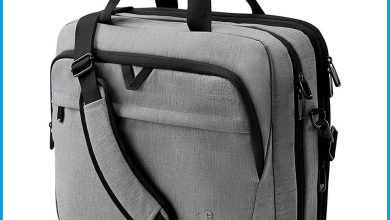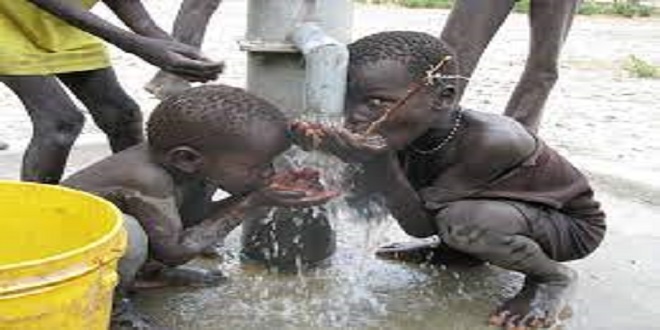How safe is Everest Base Camp Trekking

Trekking to Everest Base Camp (EBC) is more than simply a journey as it provides a remarkable experience that will grab the hearts of nature lovers and adventurers. It is nestled away amidst the Himalayas, which lures trekkers from all around the world.
Moreover, this journey to EBC offers stunning vistas of some of the world’s highest peaks including Mount Everest. It is a challenging but rewarding experience, which is a profound insight into the rich culture of the Sherpa community.
How safe is Everest Base Camp trekking? It’s the most frequent question of many aspiring trekkers’ wonders. This iconic trek comes with some risks and challenges. However, the answer is “Yes”, it is safe to embark on Everest Base Camp trekking.
The risks and difficulties can be considered before planning the journey. It is essential to be aware of the danger encountered during the trip and adopt the proper safety measures.
Therefore, the trek to Everest Base Camp requires careful planning and preparation for the mountain environment because of thin air at high elevations and unpredictable weather conditions.
This guide explores several safety facts, providing insights and advice to ensure that your journey to Everest Base Camp is accomplished with proper safety and fun.
Altitude Sickness
Comprehend Acute Mountain Sickness (AMS)
One of the potential risks on the EBC trek is Altitude sickness also known as Acute Mountain Sickness (AMS). It happens when the body doesn’t adjust to the lower oxygen level at high altitudes.
Some of the symptoms that can be seen if one suffers from AMS are nausea, headaches, fatigue, and dizziness. High-elevation atmospheric stress can lead to the development of High-Altitude Pulmonary Edema (HAPE) and High-Altitude Cerebral Edema (HACE), which can be critical.
Prevention and Management
It is important to acclimatize properly to avoid the risk of getting AMS. Follow the “climb high, sleep low” philosophy, where trekkers ascend daily and descend at a lower altitude to rest.
Taking the acclimatization day in different places (often at Namche Bazaar and Dingboche) while trekking will help to adjust your body in high altitudes. Diamox can be used as a preventive method to cure AMS but taken only under the doctor’s consultant.
Weather Situation
Seasonal considerations
The weather in the Everest area can be so erratic and often changeable. Therefore, it is better if trekkers plan their EBC trekking as per the seasons.
The ideal times for trekking are spring (March to May) and autumn (September to November). The weather at that time is cool and fresh whereas the temperature remains mild, which creates the perfect atmosphere for trekking.
Challenges of off-season trekking
Trekking during the winter (December to February) or monsoon season (June to August) presents extra challenges. Trekking in winter can encounter extreme cold and snow, making trails risky.
On the other hand, heavy monsoon rain increases the chance of landslides and makes trails slippery and treacherous.
Trail Conditions
Nature of Terrain
The EBC trails are well established but can be steep, rough, and uneven. Trekkers will pass through the rugged paths, suspension bridges, and sometimes trails covered with snow. Trekking poles and sturdy hiking shoes with ankle support help with stability and lessen the chance of injury.
Common risk
In some sections, particularly during peak seasons, the route can be crowded, requiring patience and careful direction. Trekkers should be alert for loose rocks, especially in places prone to landslides. Moreover, ice and snow can make the path slippery.
Physical Fitness
Preparing for the trek
The EBC trek needs a good level of Physical fitness. There are involvement of significant climbs and descents, often reaching altitudes over 3,000 meters.
Trekkers should start exercising such as strength training, cardiovascular training, and short trekking practices. This helps to build muscle strength and endurance.
A normal day on the trek
It requires 5-7 hours per day and covers around 10-15 kilometers each day on the trail. The varying landscapes need stamina and good balance. Bringing the necessities such as water, protein snacks and extra clothing in your daypack helps balance the Physical demands.
Health and Hygiene
Maintaining Hygiene
It is important to maintain good health and hygiene to avoid illnesses like diarrhea, which may be quite troublesome at high elevations. Trekkers should only drink treated or boiled water and eat freshly made foods. Washing your hands before meals and after using the restroom is crucial to maintaining hand hygiene.
Food and water safety
Most of the teahouses along the route offer a variety range of meals, typically consisting of essentials like rice, lentils, and noodles. Trekkers should choose cooked meals over raw meals. It is recommended to carry portable filters and water purification tablets to ensure safe drinking water.
Logistic and other essential supports
Choosing a Trekking Company
Choosing a reputable trekking company can significantly increase safety. They provide experienced guides and porters, which adds value in assisting the navigating, carrying loads, and providing support in medical issues.
Moreover, planned and organized trips they provide often have the proper emergency protocols along with access to medical services.
Benefits of Guided Treks
Having a guide who is well trained in first aid and altitude sickness management helps to ensure proper care. They make sure the itinerary allows enough time for acclimatization and often monitor the trekkers’ health.
On the other hand, porters ease the effort of carrying heavy loads during the trek. This allows trekkers to focus and enjoy the journey without the burden of carrying large loads.
Rescue and Evacuation
Emergency procedures
In case of serious sickness or injury, helicopter evacuation is the main means to transfer trekkers to medical facilities. In the Everest region, helicopter rescues are common as the local operators are skilled in high-altitude evacuations.
Importance of travel insurance
It is significant to have comprehensive travel insurance that covers high-altitude trekking and helicopter elevations. Buy the travel insurance that should cover trip cancellations, delays, and medical costs. Carry a copy of the travel insurance policy along with emergency contact information during your trek.
Permits and Regulations
Necessary Permits
Several permits are required for the EBC trek, including the trekkers’ information management system (TIMS) card and the Sagarmatha National Park entry permit. These permits ensure the legal and safety of trekking as they provide the tracking of the trekkers’ movements and information in case of emergencies.
Getting permit
Trekkers can get the permits in Kathmandu or at checkpoints along the trail. Trekkers should carry these permits all the time while trekking, as they will be checked at different points.
Communication
Stay connected
There are some reliable network connections in some of the places on the trekking route. It is important to use satellite phones or go with companies that provide reliable means of communication. Wi-Fi is available in some of the lodges but can be pricey and slow.
Emergency Contact
It is recommendable for trekkers to inform family or friends about their planned itinerary and to make regular check-ins. Trekking companies and guides often should have communication systems in place to arrange rescue operations if needed.
Tips for Safe Trekking
Acclimatize properly: Follow the itinerary that has acclimatization days. Always listen to your body and take your time when ascending.
Stay hydrated: Dehydration can aggravate altitude sickness. So, keep yourself hydrated by drinking lots of water. It is better to stay away from coffee and alcohol.
Eat well: Have a balanced diet to maintain energy levels. Carbohydrates are crucial at high altitudes.
Be aware of AMS symptoms: Know the symptoms of AMS and get help immediately if symptoms get worse. Usually, the best remedy to get rid of AMS is to descend to a lower altitude.
Walk slowly: Maintain a sustainable and comfortable pace when trekking. Trekking in a rush increases the possibility of altitude sickness and injury.
Travel in a group: If possible, go on a trek with a group or a trustworthy trekking company. Trekking alone is riskier because there is a lack of immediate assistance in case of emergency.
Insurance: Make sure you have comprehensive travel insurance with coverage for emergency evacuation and high-altitude trekking.
Conclusion
Everest Base Camp is one of the most demanding and go-to places for adventure enthusiasts. The journey offers unparalleled views and a profound sense of accomplishment.
However, the safety of EBC trekking can be ensured if you have done enough preparation, understand the potential risks, and follow the safety guidelines.
Trekkers can mitigate the risk by taking proactive steps by understanding the challenges they may face such as altitude sickness, physical strains, and unpredictable weather.
You can embark on this journey with confidence if you have enough acclimatization days, reliable assistance, fitness training, and full insurance.
The route to Everest Base Camp requires strength and endurance. It can be safe and leave an unforgettable experience with memories to cherish for a lifetime if you plan carefully and show respect for the mountains.





